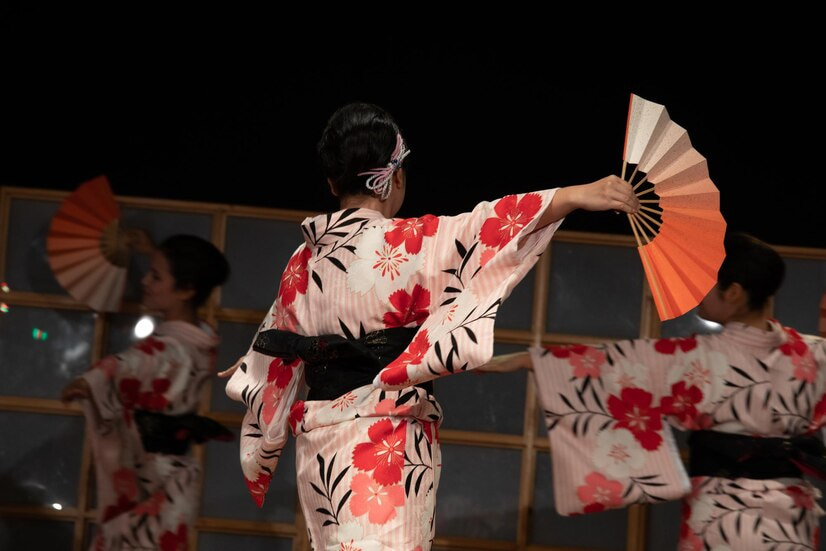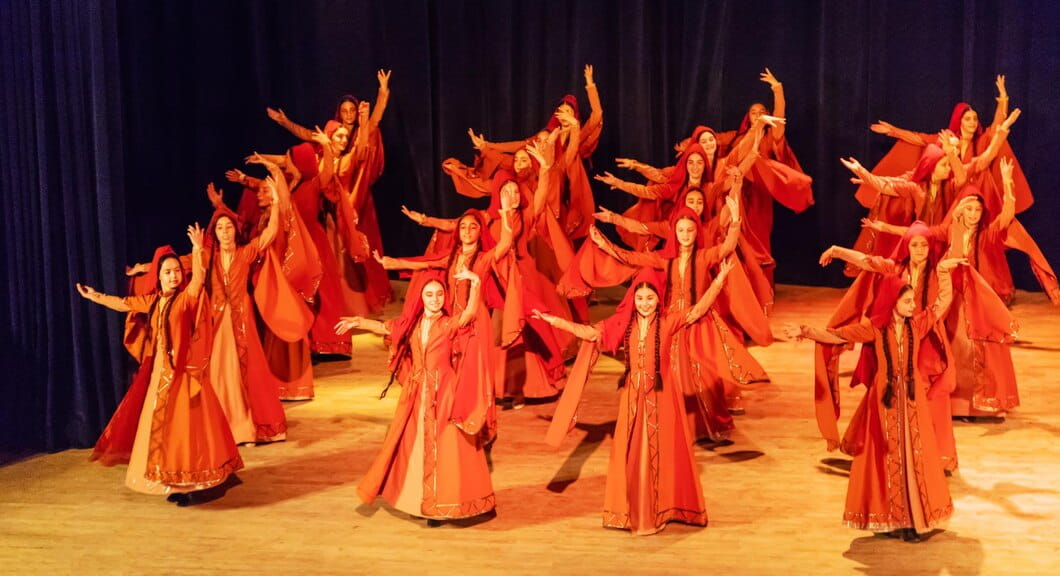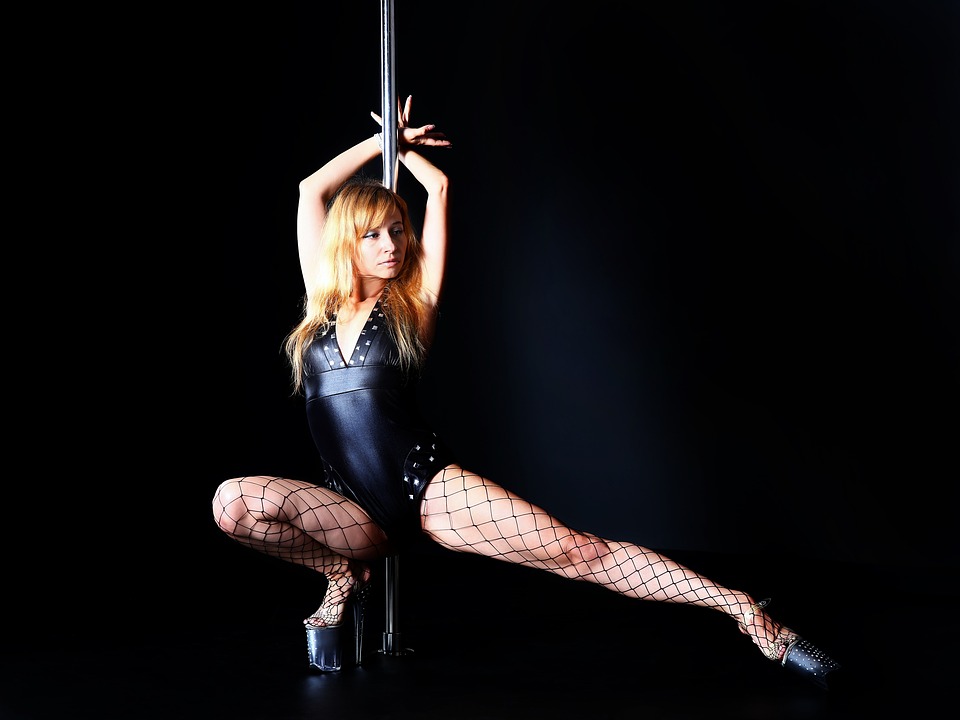
Summary
Butoh Dance: Origins and Guide to Mastering This Art
Want to learn about Butoh dance, the unique Japanese art that originated in Japan after World War II? This article will guide you through its origins, distinctive features, and show you how to get started in this intriguing discipline.
Summary
Introduction to Butoh Dance
Explore the world of Butoh dance, where each slow movement expresses intense emotional depth. Ready to dive into this fascinating art? This guide is for you.
There butoh dance, often simply called “butō,” is a unique form of Japanese body art that emerged in Japan in the 1950s, at a time when the country was rebuilding after the horrors of World War II. The dance, both mysterious and fascinating, is distinguished by its slow movements, intense body expressions, and often unsettling aesthetic. Butō is not just a dance, it is a profound exploration of the human soul, where every gesture, no matter how small, carries powerful emotional meaning.
Origin and meaning of the term butō
The term "butō" is the combination of two Japanese characters: "bu" (舞), which means "dance," and "tō" (踏), which means "to trample" or "to stamp." Together, they evoke a dance rooted in the earth, a bodily expression that seeks to explore the depths of the human being. This dance does not simply entertain; it seeks to provoke, to question, and to immerse the spectators in a reflection on the human condition.
Historical and socio-political context of the creation of butoh
Butoh emerged in a context of social and political upheaval. After World War II, Japan was undergoing a period of intense reconstruction, marked by a questioning of traditional values and an opening to Western influence. It was in this climate of confusion and transformation that Butoh emerged, as a reaction against the rigid cultural norms of the time. Butoh's creators, Tatsumi Hijikata and Kazuo Ohno, sought to express the trauma of war, social change, and the search for identity in a changing Japan.
Butoh is therefore not just a dance, it is an artistic revolt, a silent cry that seeks to transcend conventions and reconnect the individual with his true essence. By diving into the darkness and exploring taboos, butoh defies expectations and offers a new form of artistic expression, both deeply personal and universally accessible.
The origins of butoh dance
There butoh dance has its roots in a period of profound upheaval in Japan, where artists were looking for new ways to express the complex emotions born of historical trauma and rapid societal changes. This context shaped the birth of this unique art form, marked by a clear break with tradition and a desire to create a radically different body language.
The founders of Butoh
Tatsumi Hijikata And Kazuo Ohno are the emblematic figures who gave birth to butoh. Each, in their own way, made an essential contribution to the formation and diffusion of this dance.
Tatsumi Hijikata, often considered the father of butoh, developed an approach to dance deeply rooted in the body and mind. Born in 1928, he was marked by the horrors of war and the drastic changes in post-war Japanese society. Hijikata sought to express these experiences through a new body language, devoid of traditional aesthetic constraints. He thus created what he called the "Butoh Ankoku", or “dance of darkness,” a dance that delves into the depths of the human soul, exploring the darkest and most taboo aspects of existence.
Kazuo Ohno, born in 1906, brought a spiritual and emotional dimension to butoh. His dance, often inspired by his personal experiences and religious beliefs, is imbued with grace and mysticism. Ohno saw butoh as a way to transcend everyday reality to achieve a pure and universal form of expression. His approach, softer and more poetic than that of Hijikata, allowed butoh to reach a wider audience, while retaining its emotional depth.
The impact of post-World War II events on the creation of butoh
Butoh is closely linked to the events following World War II. Japan, then in the midst of reconstruction, was facing a profound identity crisis. Military defeat, American occupation, and the country's rapid transformations left indelible marks on Japanese society. These upheavals encouraged a generation of artists, including Hijikata and Ohno, to question established norms and explore new forms of expression.
Butoh was thus born out of a need for rupture, an urgent need to free oneself from Japanese cultural traditions, considered too rigid and conventional, to create a dance that reflects the raw reality of human existence. Butoh is not only an artistic reaction, it is also a form of resistance, a way to redefine Japanese identity through a dance that rejects conventions and embraces the shadow and light of the human soul.
Inspiration and artistic influences
Butoh did not develop in a vacuum. It was heavily influenced by European avant-garde movements, as well as a conscious rejection of traditional Japanese dance forms.
Influence of European avant-garde movements
Butoh artists drew inspiration from European avant-garde movements such as the surrealism and theexpressionism. These movements, with their rejection of established aesthetic norms and their exploration of inner, subconscious worlds, offered Butoh dancers a theoretical framework for developing their own body language. Surrealism, with its emphasis on the irrational and the dreamlike, particularly influenced the way Butoh dancers expressed altered states of consciousness and parallel realities on stage.
Rejection of traditional Japanese forms such as Kabuki and Noh
At the same time, butoh was constructed in opposition to traditional Japanese dance forms, such as Kabuki and the Noh. These forms, with their strict codes and refined aesthetics, were perceived by the founders of butoh as being disconnected from contemporary reality. Butoh, on the contrary, is intended to be a raw, immediate dance, deeply connected to the psychological and physical reality of the performers. This rejection of traditions is not a simple negation, but an attempt to rediscover a lost authenticity, a bodily expression that reflects the naked truth of human existence.

The characteristics of butoh dance
There butoh dance is a profoundly unique art form, marked by distinctive characteristics that radically differentiate it from other forms of dance, both in Japan and worldwide. Through a singular aesthetic and an innovative philosophical approach, butoh explores the darkest recesses of the human soul, offering an experience that is both disconcerting and captivating for the viewer.
Aesthetics and body expression
Butoh is distinguished above all by its visual aesthetics and the bodily expression of its dancers. Among the most striking elements, we find the use of the white makeup and slow movements, which have become signatures of this dance.
The white makeup, applied to the entire face and body, not only serves to standardize the dancer's appearance, but also to symbolize a break with personal identity. It evokes a kind of living death, a timeless creature that transcends everyday reality. This whitened face allows the dancer to become a blank canvas, ready to express deeply buried emotions and moods, far from social conventions.
The slow and controlled movements, another key characteristic of butoh, allow for a meticulous exploration of the body and its limits. These movements contrast sharply with the speed and fluidity generally associated with dance, creating a palpable tension on stage. This slowing down of the gesture pushes the spectator to an introspection, to an almost meditative contemplation, where each movement becomes the bearer of an intense emotional charge.
Butoh also addresses dark and taboo themes, often ignored or avoided in other art forms. The dancers explore topics such as death, suffering, and madness, delving into tormented psychological worlds. This exploration of the shadows of human existence, although uncomfortable, allows for the revelation of universal truths, and establishes a deep connection between the dancer and the spectator.
The emotional impact on the audience is therefore central to Butoh. This dance does not seek to please or entertain in the classical sense of the term; rather, it seeks to provoke, to upset, to invite everyone to confront their own fears and desires. It is an immersive experience that can be both cathartic and disturbing, a true dive into the collective unconscious.
Philosophy and artistic approach
Beyond its particular aesthetic, butoh is characterized by a philosophy and an artistic approach which break with traditional dance conventions.
One of the specificities of butoh is theabsence of strict codification. Unlike other forms of dance, which rely on precise techniques and codified movements, butoh allows its dancers great freedom of interpretation. This lack of rigid rules allows for a great diversity of styles within butoh itself, with each dancer being free to explore and develop their own version of this dance. This makes butoh an art form in perpetual evolution, always open to new influences and interpretations.
This freedom is also reflected in the relationship between the dancer, the body, and the universe. Butoh does not see the body as a simple tool to perform movements, but as a vehicle to express deep inner realities. The Butoh dancer is in perpetual interaction with his environment, whether it is the stage space, the objects that surround him, or even the audience. This intimate connection with the universe that surrounds him is essential to create an authentic performance, where each gesture, each breath, becomes an act of profound communication.
Finally, the philosophy of butoh is based on the idea that dance is not an act of representation, but an act of transformation. The butoh dancer does not seek to embody a character or tell a linear story, but to transform himself, to become a channel through which invisible and mysterious forces manifest themselves. This transformation is often accompanied by intense introspection, where the dancer explores the deepest and most hidden aspects of his being.
How to Dance Butoh: A Step-by-Step Guide
Learn to dance the butoh is both a physical and spiritual process. This dance is not limited to the execution of specific movements, but requires a deep inner exploration, where each gesture reflects an emotion, a thought or a state of mind. This step-by-step guide will accompany you in your initiation to butoh, offering you the keys to understand and practice this unique dance.
Physical and mental preparation
Before you start dancing Butoh, it is essential to prepare both your body and your mind. Butoh requires total presence, an intimate connection between body and mind.
Relaxation and body awareness exercises : Start with relaxation exercises to release physical and mental tension. Lie on the floor, close your eyes, and focus on your breathing. Let your body relax gradually, releasing each muscle, from your feet to your head. This deep relaxation is essential to reach a state of body awareness, where you are fully connected to every part of your body.
Breathing and meditation techniques : Breathing plays a crucial role in Butoh. Adopt slow, controlled breathing, inhaling deeply through your nose and exhaling slowly through your mouth. You can also practice meditation exercises, where you focus your attention on your breath, in order to anchor yourself in the present moment and connect with your body. Meditation will help you develop a heightened awareness of your bodily sensations, an essential step in entering the Butoh mindset.
Learning the basic movements
Once your body and mind are prepared, you can begin to explore the basic movements butoh. This dance is characterized by slow, controlled, and often minimalist movements that express complex inner states.
Introduction to slow and controlled movements : Butoh emphasizes slowness, not out of constraint, but to allow for a careful exploration of each gesture. Start with simple movements, such as slowly raising an arm or taking a step forward. Focus on every detail: the tension in your muscles, the sensation of your skin, gravity influencing your body. This attention to bodily sensations is the key to giving meaning to each movement.
Importance of improvisation and personal expression : Unlike other forms of dance, Butoh does not rely on a fixed choreography. Improvisation is at the heart of this practice. Let yourself be guided by your emotions, your memories, or even your thoughts of the moment to create spontaneous movements. There is no "good" or "bad" movement in Butoh, only authentic gestures that reflect your inner state. This freedom allows you to develop your own style, in accordance with your personality and your life experiences.
Development of a Butoh performance
Once you have the basics down, you can start to develop a performance of butoh, integrating the elements learned and creating your own artistic universe.
Creation of a personal choreography : To create a butoh choreography, start with a theme or emotion that is dear to you. It could be a fear, a memory, or an existential question. Use slow, controlled movements, as well as improvisation, to express this theme through your body. Feel free to explore different qualities of movement, playing with tension, speed, and direction.
Use of space and interaction with the public : Butoh is not just danced for yourself, it is shared with the audience. Use the space around you consciously, integrating objects, shadows, and sounds into your performance. Every interaction with the environment must have meaning, an intention. Furthermore, even if Butoh can seem introspective, do not forget to create a connection with the audience. Your movements, your gaze, and your presence on stage must communicate your message, eliciting an emotional response from those watching you.

Conclusion
Butoh dance is a profound exploration of the human soul, born from the desire to break with traditions and the need to express oneself after the traumas of war. Its slow movements, unique aesthetics and philosophy without rules make it an experience that is both disconcerting and captivating. To discover more dance forms or to deepen your knowledge of butoh, explore our other articles on contemporary arts and body practices. You might find new inspirations to enrich your practice or simply broaden your artistic horizons.
Dance with DECIBEL
If you want to combine dance and cardio, DECIBEL® is for you! Join our 45-minute sessions where fitness and dance combine to boost your endurance and tone your body.
Let yourself be carried away by energizing choreographies in a warm atmosphere. Our passionate coaches will help you sculpt your abs, thighs, and glutes, all in a dynamic atmosphere, with motivating music and soothing lighting.
At DECIBEL®, pleasure is guaranteed! Reserve your place in our studio in Beaubourg now!
Read also
follow us
on instagram
Follow our news,
take advantage of our tutorials and participate to our
contests!
BREAKING NEWS!
Receive our newsletter.






